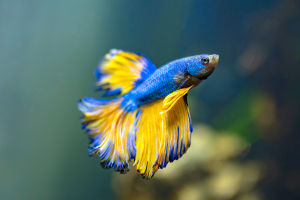Have you ever wondered why some birds can soar through the sky, while others seem perfectly content to stay on the ground? Take the eagle, with its massive wingspan and powerful flight, and compare it to the penguin, which waddles across icy terrain with no inclination to fly at all.
The difference may seem simple at first, but when you dig deeper into bird anatomy, you find that the reasons for this disparity go beyond just size and strength. So, what exactly determines whether a bird can fly or not? Is it all about wings, or is there more to it?
Let's take a closer look at bird anatomy and the unique features that make flight possible for some and impossible for others.
Key Factors that Enable Flight
Birds are one of the few species on Earth designed for flight. But not all birds are created equal when it comes to taking off into the air. To understand why some birds fly and others don't, we need to look at the key features that enable flight.
1. Wing Structure
The wings of flying birds are finely tuned for aerodynamic efficiency. The wing structure is designed to generate lift, enabling the bird to become airborne. A bird's wings are made up of long, strong feathers attached to a lightweight skeletal structure. The shape of the wings also plays a huge role—broad wings are excellent for gliding, while pointed wings help birds with fast, agile flight.
Birds like eagles or hawks have large wings with a large surface area that provides strong lift and allows them to soar at great heights. These birds also have powerful pectoralis muscles that help with the downstroke of their wings, pushing them upwards into the sky.
2. Lightweight Skeleton
Birds are known for their lightweight skeletal structures, which are a key factor in making flight possible. Their skeletal structures are hollow, yet strong, which reduces the overall weight of the bird without sacrificing strength. This feature is what allows birds to take to the skies with less energy than a creature with denser skeletal structure moves less easily.
The avian skeleton is also designed for maximum efficiency. The keel, a large, flat sternum on the chest, is the anchor point for powerful flight muscles, which help birds flap their wings. The combination of light skeletal elements and strong muscles makes it easier for birds to generate enough lift for flight.
3. Powerful Muscles
To achieve flight, birds rely on strong pectoral muscles, which are responsible for powering the downstroke of the wings. In birds that can fly, these muscles are much more developed than in flightless birds. The size and power of the chest muscles dictate how strong a bird's wingbeats can be, which in turn influences how high or far they can fly.
Flightless birds, on the other hand, typically have weaker pectoral muscles because they never need to generate that kind of power to fly. Instead, their muscles are adapted to other functions, such as running or swimming.
Why Some Birds Can't Fly?
While the anatomy of flying birds is fascinating, what about the birds that don't have the ability to fly? There are several reasons why some birds have lost the ability to take flight, and these reasons are often tied to their evolutionary history and environmental adaptations.
1. Evolutionary Adaptations
Over millions of years, certain bird species have evolved in ways that have made flight unnecessary, or even disadvantageous. For example, penguins are excellent swimmers, but they cannot fly. Their wings have evolved into flippers, perfect for navigating the ocean, while their bodies have become more streamlined for aquatic life.
On the other hand, birds like ostriches and emus have evolved to become large, fast-running birds. Their wings have become too small to provide enough lift for flight, but they use their powerful legs to run at incredible speeds. These birds have adapted to their environment in ways that make flight redundant.
2. Flightless Birds: Lost in Time
Some birds, such as the kiwi or the dodo, were historically flightless due to their environment. Many flightless birds evolved in places where there were no natural predators, so the need to fly for survival wasn't as pressing. This lack of predators allowed them to focus on other skills, like running or digging, and their wings gradually shrank over time.
Other flightless birds, like the Cassowary, still rely on their strong legs and sharp claws to defend themselves, rather than flying away. In these cases, flightless birds have developed other survival mechanisms suited to their environment.
3. The Impact of Size
The size of a bird also plays a significant role in its ability to fly. Larger birds tend to have more difficulty taking off and staying in the air. This is because larger bodies require more energy and stronger wing muscles to lift off the ground. Birds like vultures and albatrosses have large wingspans that help them glide over long distances, but their heavy bodies make it harder to achieve quick, powerful takeoffs.
Energy Efficiency vs. Necessity
It's important to note that flying requires a lot of energy. For some birds, it's simply more energy-efficient to walk or run rather than waste valuable energy on flight. Birds like chickens, for example, are perfectly capable of short flights, but they prefer to stay grounded where they can forage and feed without the need to expend energy in the air.
Other birds, like the pigeon or sparrow, are highly efficient fliers and use flight for everything from escaping predators to finding food and mates. These birds rely on flight for their survival, making it an essential part of their anatomy.
Conclusion: Flight is Just One of Nature's Marvels
The fact that some birds can fly while others cannot boils down to their unique adaptations and evolutionary history. Flying birds are equipped with lightweight bones, strong muscles, and wings designed for lift. In contrast, flightless birds have adapted in other ways to suit their environment, whether through running, swimming, or simply staying grounded.
Whether soaring through the skies or waddling on the ground, each bird's anatomy serves a purpose. It's a testament to the incredible ways nature can shape creatures to thrive in their habitats. So, the next time you see a bird, whether it's in the sky or on the ground, take a moment to appreciate the extraordinary evolutionary journey that led it to where it is today.


